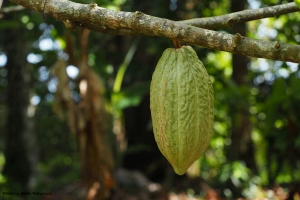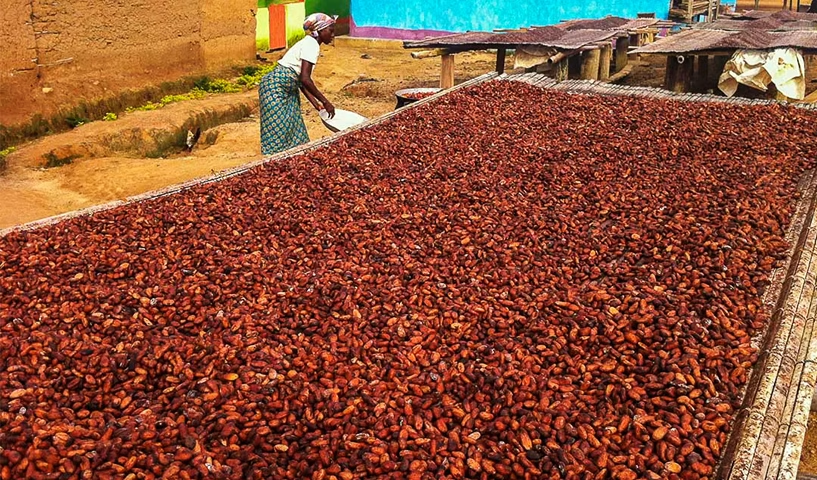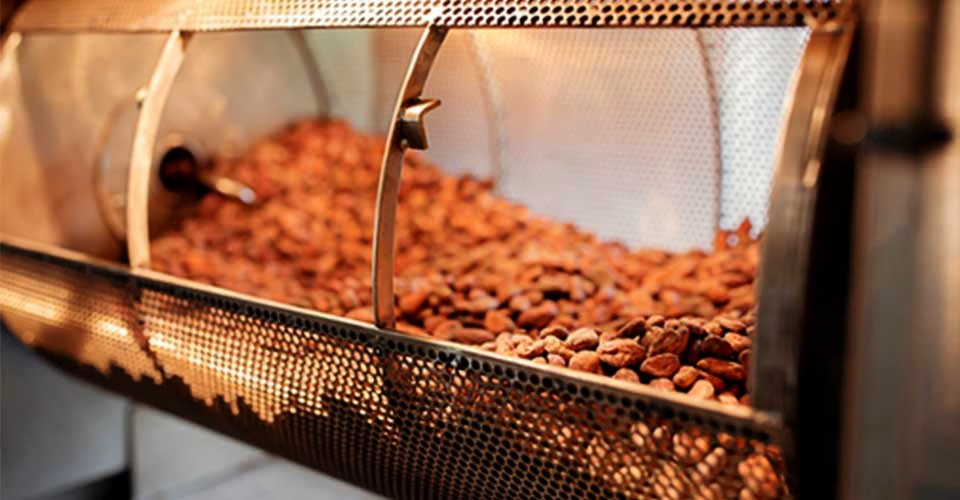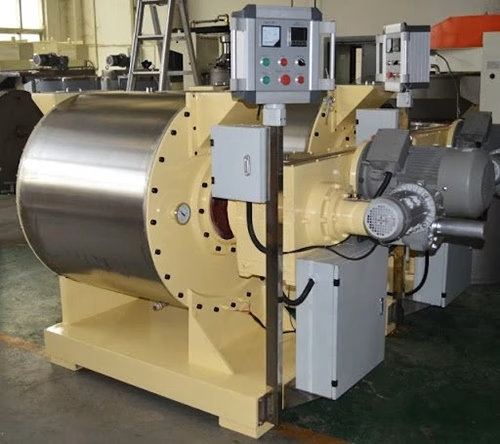A Short Journey of Chocolate: From Bean to Bar
Chocolate is one of the most loved treats worldwide, enjoyed by people across cultures and continents. However, the process of making chocolate is long and complex, involving multiple steps that transform raw cacao beans into the smooth, delicious confections found in stores.
Each stage – from cultivation to packaging – plays a crucial role in shaping the final product.
Hopefully, in this article I attempt to explore the entire journey of chocolate, from cacao cultivation to the final packaged product, detailing the essential processes, transportation, and shipping involved. And as a bye line – why chocolate is becoming expensive.

1. Cultivation of Cacao Trees
Chocolate begins with the cultivation of Theobroma cacao, a tree native to the tropical regions of Central and South America but now grown in several parts of the world.
The primary cacao-producing countries include:
- South America (Ecuador, Brazil, Colombia, Peru, Venezuela) – Known for fine-flavour cacao varieties.
- West Africa (Ivory Coast, Ghana, Nigeria, Cameroon) – Over 70% of the world’s cacao comes from this region.
- Southeast Asia (Indonesia, Malaysia, Papua New Guinea, Philippines) – A growing cacao production region.
Cacao trees require warm, humid conditions with ample rainfall, making equatorial regions the best places for cultivation. These trees take about four to five years to start producing cacao pods, which contain the precious beans.
A healthy cacao tree can produce around 20–30 pods per year.
Ongoing climate change threatens cacao cultivation through rising temperatures, unpredictable rainfall, increased pests, and soil degradation. Droughts and extreme heat reduce yields, while pests and diseases spread more rapidly. Farmers are adopting shade-grown farming, disease-resistant cacao, and agroforestry to mitigate these effects, ensuring the sustainability of global chocolate production.
2. Harvesting
The cacao pods do not ripen at the same time, meaning that harvesting is done manually. Farmers use machetes or special knives to cut the pods from the trees to prevent damaging the delicate branches. Once harvested, the pods are cracked open to extract the beans and the surrounding white, sticky pulp. Each pod contains about 20–50 cacao beans.
Farmers must be careful when opening the pods, as excessive force can damage the beans inside. The extracted beans are then prepared for fermentation, a crucial step in flavour development.

3. Fermentation
Fermentation is one of the most important processes in chocolate production, as it develops the beans’ complex flavours. The beans, still covered in their pulp, are placed in wooden boxes or heaped under banana leaves to ferment for 3 – 7 days.
During this time, natural yeasts and bacteria break down the sugars in the pulp, generating heat and chemical reactions that help remove bitterness while enhancing the chocolate flavour. Proper fermentation is crucial, as under-fermented beans can result in poor-quality chocolate.
4. Drying
After fermentation, the beans are spread out under the sun to dry, reducing their moisture content from about 60% to 6 – 7%. This process takes 5 – 10 days, depending on the climate. Farmers regularly turn the beans to ensure uniform drying and prevent mold growth.
All of this is very labour intensive.
Drying is essential because improperly dried beans can spoil during storage and transport. Once dry, the beans are packed into burlap or jute sacks, ready for the next stage: transportation.

5. Transportation and Global Shipping
Local Transport (Farm to Export Warehouse)
Once dried, the beans are transported from farms to local collection centers. Depending on the region, this may be done using bicycles, motorbikes, donkeys, or small trucks. Large cacao plantations often have direct contracts with exporters, but smallholder farmers typically sell their beans to cooperatives or intermediaries.
Export to International Markets
After being gathered at regional warehouses, the beans are inspected, graded, and prepared for export. They are loaded into shipping containers and transported to major ports, where they are shipped to chocolate manufacturers worldwide.
Cacao-producing countries such as Ivory Coast, Ghana, and Ecuador have major ports from which the beans are exported to chocolate factories in the U.S.A, Europe, and Asia. The shipping process can take several weeks, requiring careful storage to prevent mold or spoilage.
Once the cacao beans arrive at their destination, they are unloaded and sent to chocolate processing factories.
The Major Buyers of Cocoa Beans
The majority of cocoa beans are sold to large multinational chocolate manufacturers and cocoa processing companies, which refine the beans into cocoa mass, cocoa butter, and cocoa powder for chocolate production. The top buyers include:
- Barry Callebaut (Switzerland) – One of the world’s largest cocoa processors and chocolate manufacturers, supplying brands and businesses globally.
- Olam International (Singapore) – A major agricultural commodities trader that sources, processes, and distributes cocoa.
- Cargill (USA) – A leading supplier of cocoa and chocolate ingredients for major brands.
- Nestlé (Switzerland) – Purchases cocoa for its global chocolate and confectionery products.
- Mars (USA) – The maker of Snickers, M&M’s, and other popular chocolates, heavily reliant on cocoa supplies.
- Mondelez International (USA) – Owner of brands like Cadbury and Toblerone, sourcing cocoa for large-scale production.
These companies buy cocoa through exporters, cooperatives, and traders who source beans from cacao farmers in producing countries, particularly in Ivory Coast, Ghana, Indonesia, and Ecuador. The beans are then processed into chocolate or cocoa-based products for global distribution.
6. Roasting
Once the beans arrive at the chocolate factory, they undergo cleaning to remove debris before being roasted. Roasting temperatures range from 120°C to 150°C, and the duration depends on the type of chocolate being made.
- Light roasting brings out fruity and floral notes.
- Medium roasting enhances chocolatey flavours.
- Dark roasting creates deeper, more bitter flavours.
Roasting also loosens the shells, making the next step – winnowing – easier.

7. Winnowing
Winnowing is the process of removing the outer husk from the roasted cacao beans, leaving behind the edible nibs. These nibs contain the cocoa solids and cocoa butter needed to make chocolate.
The husks are typically discarded or repurposed as compost.
After winnowing, the nibs are ready for grinding.
8. Grinding and Refining
The nibs are ground into a thick paste known as cocoa mass or chocolate liquor.
The grinding and refining stage is a crucial part of chocolate production, where cacao nibs are transformed into a smooth, rich liquid called cocoa mass or chocolate liquor. Despite its name, chocolate liquor contains no alcohol – it is simply pure, ground cacao. This process breaks down cacao solids, releases cocoa butter, and determines the final texture of the chocolate and begins to create a smooth texture.
It is interesting to observe that during this process, heat is generated, which melts the cocoa butter naturally present in the nibs. The result is a thick, liquid cocoa mass, which can either be processed further into chocolate or pressed to separate cocoa butter and cocoa powder.
At this point, manufacturers can decide on different processing routes:
- For dark chocolate: Sugar and extra cocoa butter are added.
- For milk chocolate: Milk powder, sugar, and cocoa butter are added.
- For white chocolate: Only cocoa butter, sugar, and milk powder are used.
Further refining reduces particle size, ensuring a smoother final product.

9. Conching
Conching is a process in which the chocolate is continuously mixed, aerated, and refined to develop a smooth texture. This step can last anywhere from a few hours to several days, depending on the desired quality.
Conching removes unwanted acidity and bitterness while developing the chocolate’s creamy consistency. Premium chocolates undergo longer conching for a finer mouthfeel.
10. Tempering
Tempering is a temperature-controlled process that stabilizes cocoa butter crystals, ensuring the chocolate has a glossy appearance and a firm texture.
Chocolate is heated and cooled at precise temperatures to create stable crystals, preventing “bloom,” the white streaks that appear on poorly tempered chocolate.
11. Molding and Cooling
Once tempered, the chocolate is poured into molds to create bars, truffles, or other shapes. The molds are cooled to allow the chocolate to harden before being removed, checked for quality, and packaged.
12. Packaging and Distribution
Factory Packaging
Chocolate is wrapped in protective packaging (foil, paper, or plastic) to shield it from moisture, light, and air. Luxury brands often use premium packaging to enhance presentation.
Global Shipping and Retail Distribution
Once packaged, chocolate products are transported to retail stores via trucks, ships, or airplanes. Some brands use temperature-controlled shipping to preserve quality.
Retailers then display and sell the chocolate, completing its journey from bean to bar.
Conclusion
The transformation of cacao beans into chocolate is a long and intricate process involving numerous steps of harvesting, processing, transportation, and manufacturing. From small farms in tropical regions to factories and stores worldwide, each stage is vital in ensuring the chocolate that is enjoyed meets quality standards.
References
- International Cocoa Organization (ICCO). “Processing Cocoa.” https://www.icco.org/processing-cocoa/
- Ecole Chocolat. “How Chocolate is Made.” https://www.ecolechocolat.com/en/how-chocolate-is-made.html
- Ghirardelli. “How We Make Chocolate.” https://www.ghirardelli.com/how-we-make-chocolate/
- Lake Champlain Chocolates. “Making Chocolate.” https://www.lakechamplainchocolates.com/making-chocolate/
- Statista. https://www.statista.com/statistics/1112363/global-leading-importers-of-cocoa-beans/
- World Integrated Trade Solution: https://wits.worldbank.org/trade/comtrade/en/country/ALL/year/2023/tradeflow/Imports/partner/WLD/product/
- Tridge: https://www.tridge.com/intelligences/cocoa-bean/
- Global Trade Magazine: https://www.globaltrademag.com/top-10-import-markets-for-cocoa-bean-in-the-world/
These sources provide detailed insights into each stage of chocolate production, offering a comprehensive look at the fascinating journey from bean to bar.
